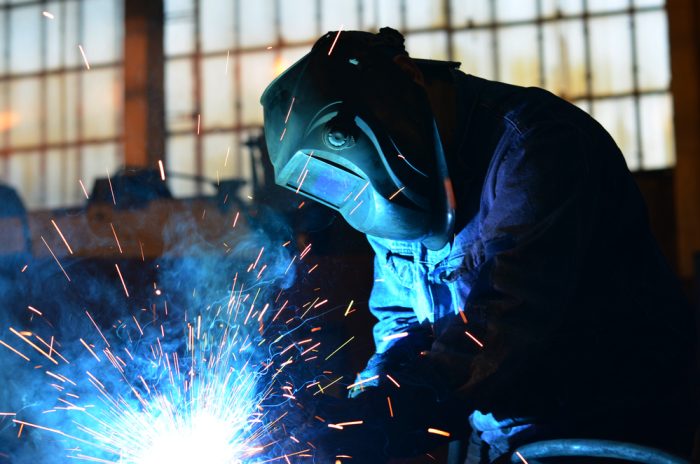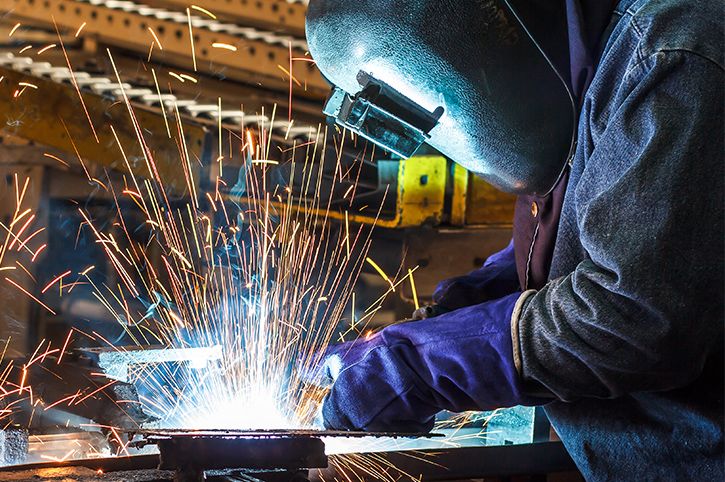Usual Welding Repair Work Issues and Just How to Address Them Efficiently
Welding repairs commonly come across an array of concerns that can threaten the integrity of the final product. Common issues consist of insufficient penetration, porosity, and misalignment, to name a few. Each issue offers one-of-a-kind obstacles that call for certain strategies for resolution. Understanding these concerns is essential for welders aiming to enhance their abilities and outcomes. This conversation will certainly check out these typical welding fixing problems and effective techniques to resolve them.
Poor Penetration
Insufficient infiltration happens when the weld metal stops working to totally fuse with the base material, resulting in weak joints and possible architectural failures. This problem often comes from not enough warm input, wrong electrode angle, or inappropriate welding speed. Welders might come across inadequate penetration because of a mistake of the required parameters for a specific material thickness or type. In addition, contamination on the base product's surface area can hinder efficient bonding, intensifying the problem. To attend to poor penetration, welders ought to assure proper settings on their tools and maintain a tidy work surface. Routine examination of welds is recommended to determine any type of shortages early, allowing for prompt modifications and the avoidance of endangered structural integrity in bonded settings up.
Porosity
Porosity is an usual issue in welded joints that materializes as small gas bubbles trapped within the weld steel. This flaw can compromise the honesty of the weld, resulting in reduced strength and potential failure under stress. Montana Mobile Welding and Repair Welding. Porosity typically emerges from contamination, wetness, or incorrect welding strategies, which permit gases to get away into the liquified weld pool. To address porosity, welders need to ensure proper surface area preparation, keep a clean working setting, and use suitable welding specifications. In addition, choosing the right filler product and protecting gas can minimize gas entrapment. Normal assessment and testing of welds can assist determine porosity early, assuring prompt restorative activities are taken, thus preserving the quality and dependability of the bonded structure
Imbalance
Imbalance in welding can emerge from various factors, including improper arrangement and thermal growth. Understanding the source is necessary for efficient resolution. Several improvement strategies are readily available to straighten elements and ensure structural integrity.
Sources of Imbalance
Welding imbalance typically comes from a range of underlying concerns that can compromise architectural integrity. One main reason is inappropriate fit-up of components prior to welding, which can cause gaps and irregular surfaces. Variants in thermal expansion throughout the welding process can also result in distortion, specifically if the products being joined have various coefficients of growth. In addition, poor fixturing and securing may fail to hold parts safely in position, resulting in motion throughout welding. Poorly conserved equipment, consisting of welding machines and tools, might introduce incongruities in the weld bead, additional adding to imbalance. Finally, operator mistake, stemming from inadequate training or experience, can additionally play a significant function in producing misaligned welds.
Adjustment Strategies Offered
Dealing with imbalance properly needs a mix of rehabilitative techniques customized to the specific problems handy. One usual method is using jigs or components to hold parts in the correct position during welding, making sure regular placement. In addition, preheating the materials can assist lower distortion and enhance fit-up. For substantial misalignment, mechanical adjustment strategies, such as making use of hydraulic jacks or clamps, can be used to deal with the setting before welding. Post-weld warmth therapy may likewise be required to soothe anxieties brought on by imbalance. Lastly, careful evaluation and adjustment throughout the configuration stage can prevent misalignment concerns from becoming significant troubles, advertising a smoother welding procedure and boosting general structural integrity.
Distortion
Distortion is a common obstacle in welding that can arise from numerous factors, consisting of irregular home heating and air conditioning. Recognizing the sources of distortion is important for implementing reliable avoidance strategies. Addressing this concern not only boosts architectural integrity yet likewise enhances the overall top quality of the weld.
Sources of Distortion
When subjected to the extreme warmth of welding, products typically undergo modifications that can cause distortion. This sensation mostly arises from thermal development and tightening during the welding process. As the weld location warms up, the material expands; upon cooling, it gets, which can develop internal stresses. Additionally, irregular heating throughout a work surface can intensify these anxieties, causing warping or bending. The type of material likewise plays a significant duty; metals with varying thermal conductivity and coefficients of growth may react in a different way, resulting in unforeseeable distortions. Furthermore, inadequate joint design and poor fixturing can contribute to misalignment throughout welding, boosting the likelihood of distortion. Recognizing these causes is vital for reliable welding repair service and prevention methods.
Avoidance Techniques
Efficient avoidance techniques for distortion during welding concentrate on managing warm input and making certain correct joint layout. Maintaining a constant warmth input helps to minimize thermal expansion and tightening, which can bring about distortion. Using methods such as pre-heating the work surface can likewise reduce the temperature gradient, advertising consistent heating. Furthermore, picking appropriate joint designs, such as T-joints or lap joints, can boost security and lower stress focus. Executing proper fixturing to protect the work surfaces in location better aids in maintaining placement throughout the welding process. Staggered welding series can distribute heat a millerwelds lot more equally, avoiding local distortion. By using these approaches, welders can considerably reduce the likelihood of distortion and enhance the general top quality of their welds.
Cracking
Fracturing is a typical problem encountered in welding repairs, frequently resulting from various aspects such as inappropriate air conditioning prices, material choice, or poor joint prep work. The event of fractures can significantly compromise the integrity of the weld, causing possible failures during procedure. To resolve this concern, welders should initially assess the origin, making certain that materials are suitable and properly picked for the certain application. Furthermore, regulating the cooling price during the welding procedure is necessary; rapid cooling can induce anxiety and cause splitting. Appropriate joint style and prep work additionally contribute to reducing the risk. Applying these methods can enhance weld quality and durability, inevitably lowering the possibility of fracturing in finished weldments.

Incomplete Fusion
A significant issue in welding repair services is insufficient fusion, which happens when the weld metal does not appropriately bond with the base material or previous weld passes - Welding. This flaw can lead to weak points in the joint, potentially endangering the stability of the welded structure. Aspects adding to insufficient combination consist of not enough warm input, inappropriate welding strategy, and contamination of the surface areas being joined. To address this problem successfully, welders need to guarantee correct pre-weld cleansing and surface preparation, as well as readjust their welding specifications to attain ample penetration and combination. Regular evaluation during the welding procedure can likewise help determine insufficient blend early, permitting timely restorative measures to boost the overall top quality of the weld
Overheating
While welding repairs can boost structural integrity, overheating presents a significant difficulty that can cause material degradation. Excessive warm during welding can alter the mechanical buildings of steels, leading to lowered toughness, enhanced brittleness, view it now and warping. This phenomenon is especially critical in high-stress applications where architectural dependability is vital. Determining getting too hot can include aesthetic assessments for staining or distortion, in addition to keeping track of temperature level during the welding procedure. To minimize the threats related to overheating, welders must use appropriate strategies, such as controlling warm input, readjusting travel rate, and making use of suitable filler products. In addition, applying pre- and post-weld warmth treatments can aid restore product properties and enhance the total quality of the repair, ensuring long-term efficiency and safety and security.
Regularly Asked Questions
What Are the Common Indications of a Welding Issue?

How Can I Examine My Welds for Quality?
To test welds for high quality, one can utilize aesthetic evaluations, ultrasonic testing, visit this page and radiographic approaches. Each method ensures architectural integrity, identifies flaws, and confirms adherence to defined requirements, inevitably improving the dependability of the bonded joints.
What Safety and security Precautions Should I Take While Welding?
When welding, one need to focus on safety and security by putting on suitable individual safety tools, ensuring appropriate air flow, securing combustible materials away, preserving a clean work area, and knowing environments to stop injuries and crashes.
Can I Repair a Weld Without Redoing the Entire Joint?
Repairing a weld without redoing the entire joint is feasible, depending on the damage (Montana Mobile Welding and Repair Welding). Methods such as grinding, including filler product, or utilizing a welding procedure can effectively address particular defects while maintaining the bordering framework
What Devices Are Necessary for Reliable Welding Services?
Important devices for effective welding repair services consist of a welding maker, wire brush, mill, protective gear, clamps, and filler materials. Each tool plays a vital duty in ensuring quality and safety during the repair work procedure. Porosity generally emerges from contamination, moisture, or improper welding techniques, which enable gases to leave into the liquified weld pool. Improperly kept tools, consisting of welding machines and devices, may introduce inconsistencies in the weld grain, more contributing to misalignment. When subjected to the extreme warmth of welding, products typically go through modifications that can lead to distortion. Cracking is a common concern run into in welding repair work, often resulting from different aspects such as improper cooling prices, material selection, or insufficient joint prep work. A substantial issue in welding fixings is incomplete combination, which happens when the weld metal does not sufficiently bond with the base material or previous weld passes.